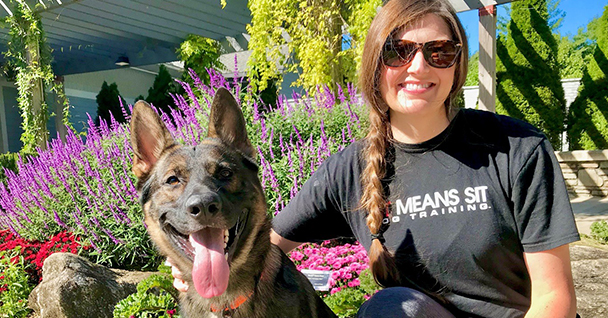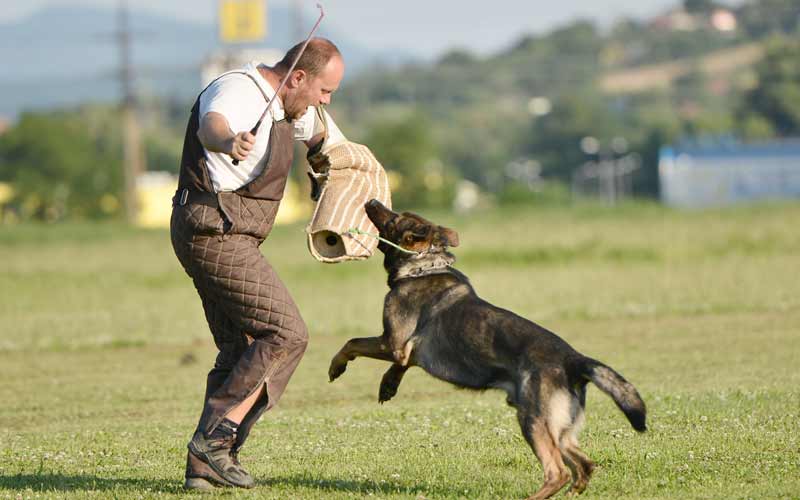Just how to Select the Right Technique for Effective Dog Training
Vital Tips for Effective Dog Training: A Guide for Animal Owners
Efficient pet training is a complex process that calls for a tactical strategy tailored to both the animal's personality and the proprietor's goals. Secret parts such as developing consistent commands, employing favorable reinforcement, and promoting early socialization play vital functions in promoting a well-adjusted canine buddy. Nonetheless, several pet owners come across challenges that can hinder progression, bring about aggravation and uncertainty. Understanding exactly how to navigate these challenges can substantially boost the training experience, inevitably transforming the relationship in between owner and dog. What are the essential approaches that can be utilized to ensure success in this undertaking?
Understanding Canine Behavior
Understanding canine habits is important for efficient training and promoting a harmonious partnership in between dogs and their proprietors. dog training. Canines interact mostly via body language, articulations, and activities, making it essential for owners to translate these signals precisely.

Socialization plays a significant function in canine behavior; exposure to numerous settings, people, and various other pets can substantially impact a pet dog's personality. Aspects such as type characteristics and specific temperament should assist training approaches, as some breeds may have specific behavior traits that necessitate tailored techniques. By comprehending these components, proprietors can develop an encouraging setting that urges favorable actions, bring about effective training results and a deeper bond with their family pets.
Establishing Consistent Commands
Effective interaction with your canine starts with establishing constant commands. This fundamental aspect of training is critical for fostering understanding in between you and your animal. Consistency in the commands you use makes certain that your canine can dependably connect certain words or expressions with the preferred actions.
When choosing commands, select clear, unique words that are easy to separate and state from each other. Avoid making use of similar-sounding commands that may confuse your dog. Making use of "sit" and "remain" is appropriate, but "sit" and "hit" can lead to misunderstandings.
Furthermore, maintain the exact same tone and quantity for each command. Pet dogs are sensitive to vocal hints, so differing your tone can create confusion.
It is similarly crucial to make certain that all member of the family get on the very same web page pertaining to the commands made use of. A united front in command usage will certainly stop combined signals and enhance the discovering procedure.
Positive Reinforcement Methods
The power of positive reinforcement in dog training exists in its capability to urge wanted behaviors with rewards and praise. This method is grounded in the concept that behaviors adhered to by favorable end results are more probable to be duplicated. By incorporating favorable support into your training program, you can properly shape your dog's habits in a constructive way.
To implement favorable reinforcement, it's important to determine what inspires your pet dog, whether it be deals with, playthings, or verbal praise. When your pet dog performs a wanted action, such as resting on command, right away reward them with a treat or affection. This association between the command and the positive end result reinforces their understanding.
It's essential to timing the benefits correctly; delivering the reinforcement within secs of the preferred behavior aids your canine make the link (dog training). Furthermore, consistency is crucial-- ensure that all relative use the very same commands and reward systems to stay clear of confusion

Slowly, you can lower the regularity of deals with as your pet finds out the actions, transitioning to commend or periodic incentives. This method not only cultivates a strong bond in between you and your pet but also promotes a favorable learning environment, making training a pleasurable experience for both.
Socialization and Interaction
Consistently revealing your canine to a selection of settings, people, and various other animals is important for their social advancement. Socializing should begin early, ideally throughout the essential window of 3 to 14 weeks, when young puppies are most receptive to brand-new experiences. Older pet dogs can additionally profit from ongoing socializing initiatives.
Present your dog to various setups, such as parks, pet-friendly stores, and city locations. This exposure helps them adjust to numerous stimulations, decreasing stress and anxiety and anxiety reactions. Urge positive interactions with other pet dogs and people, making certain that these experiences are secure and controlled to promote confidence.
Utilize organized playdates with well-mannered canines, as this can enhance your canine's social skills and instruct them suitable actions. Obedience courses and training sessions additionally give superb chances for socializing, allowing your pet dog to engage with others in a monitored environment.
Display your canine's body language during communications, as this will certainly aid you assess their comfort level. Progressively boost direct exposure to more difficult situations while ensuring that each experience declares. A well-socialized pet is more probable to show balanced habits, making them a pleasure to have in any kind of setup.
Addressing Typical Training Obstacles
Every canine proprietor will certainly come across training difficulties at some time, despite their canine's age or socialization level. Determining typical issues such as stubbornness, interruptions, and fearfulness can help in creating effective approaches for improvement.

Interruptions during training sessions can thwart emphasis. To battle this, begin training in a silent setting with marginal stimulations. Gradually introduce distractions as the dog becomes a lot more skillful in commands. Short, regular training sessions are likewise effective in maintaining attention.
Terror can impede a pet dog's knowing process. Steady desensitization to the source of anxiety, matched with positive reinforcement, can assist minimize anxiousness. Perseverance is essential; never force a dog into a situation that creates distress, as this might aggravate the concern.
Inevitably, understanding and resolving these common obstacles with a structured technique will promote an extra productive training experience, reinforcing the bond between pet and proprietor while promoting reliable knowing.
Final Thought
In summary, successful canine training counts on a comprehensive understanding of canine habits, the establishment of consistent commands, and the application of favorable reinforcement methods. Socializing plays an important function in establishing well-adjusted pet dogs, while addressing common training difficulties calls for persistence and flexibility. By applying these important methods, family pet proprietors can promote a strong bond with their dogs and promote desirable behaviors, eventually leading to a harmonious connection between human beings and their canine friends.
Understanding pet dog habits is crucial for efficient training and promoting a harmonious connection in between pooches and their proprietors.Socialization plays a considerable function in dog behavior; exposure to different environments, individuals, and various other animals can significantly impact a pet's temperament.The power of favorable reinforcement in pet training lies in its capacity to encourage desired habits with rewards and appreciation. By incorporating favorable reinforcement into your training program, you can effectively form blog your pet dog's behavior in a constructive way.
In recap, effective pet training depends on a thorough understanding of canine actions, the facility of consistent commands, and the application of positive reinforcement techniques.